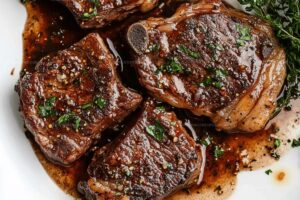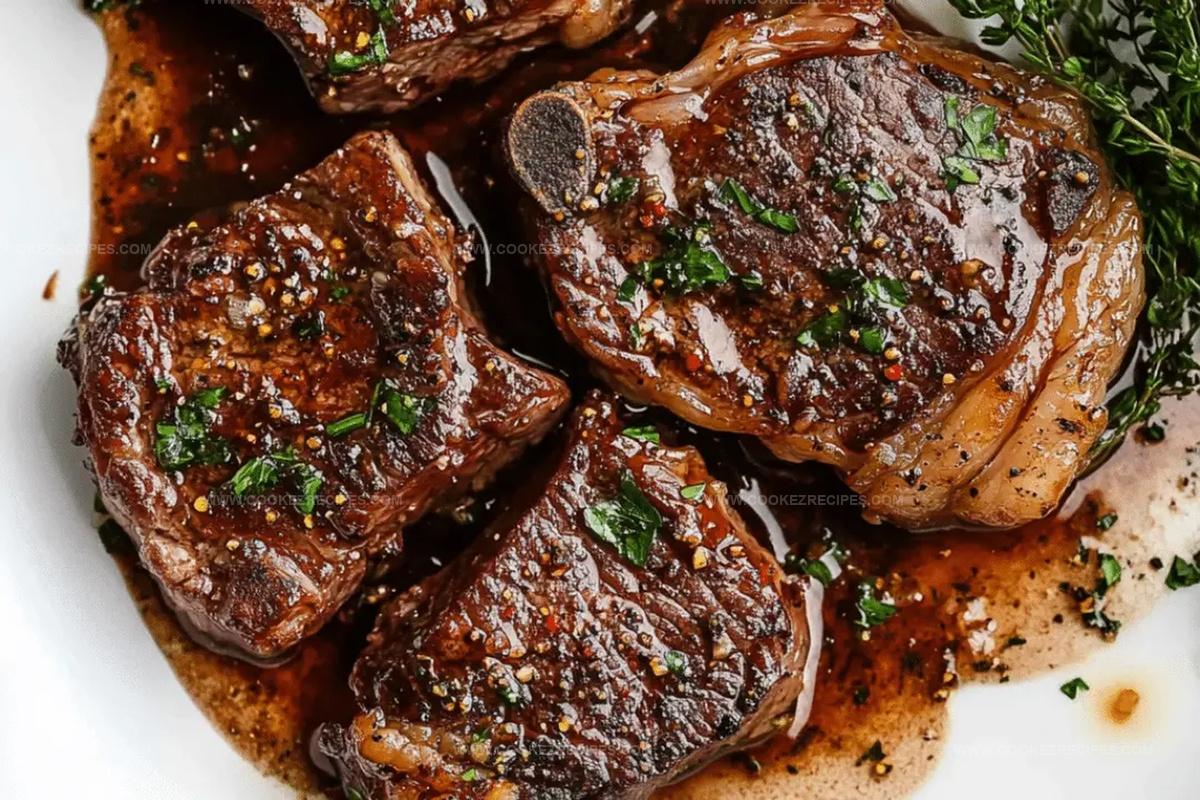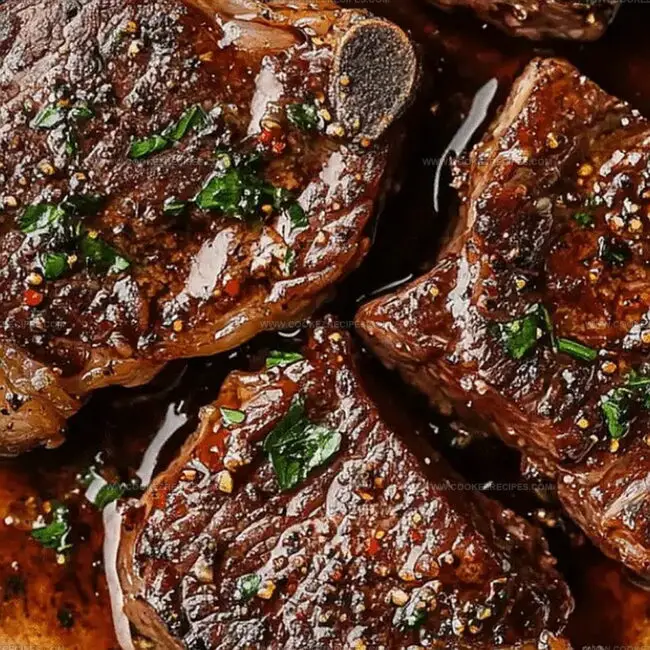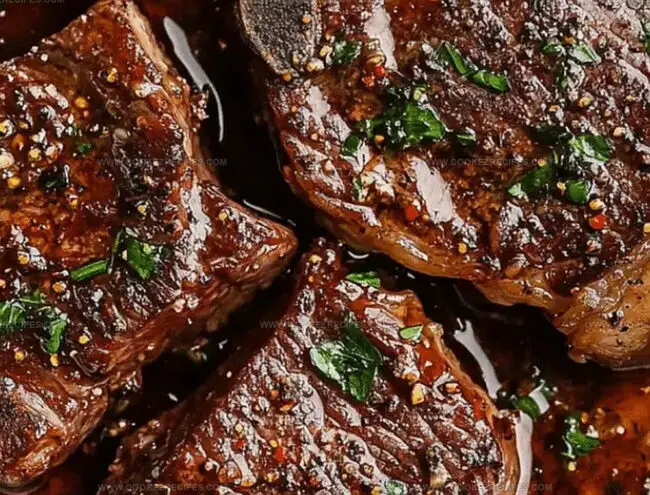How to Cook Steak in the Oven for Juicy Results
My favorite weeknight steak recipe transforms ordinary dinner into a mouthwatering experience that feels almost magical.
Culinary magic happens when simple techniques meet quality ingredients.
Professional chefs know the secret to perfectly cooked meat lies in preparation and temperature control.
Salt and pepper become your best friends when seasoning this delectable protein.
High-heat cooking creates a beautiful caramelized exterior while keeping the inside tender and juicy.
Precise timing ensures you achieve that restaurant-quality result without complicated steps.
Let’s uncover how you can create a restaurant-worthy steak right in your own kitchen.
Steak In The Oven That’s Juicy and Perfectly Done
Oven Steak Cooking Ingredient List
Protein:Fats and Seasonings:Herbs:Oven Steak Roasting Guide
Step 1: Prepare Oven and Skillet
Heat your oven to 400 degrees Fahrenheit.
Select a sturdy cast-iron skillet that can transition from stovetop to oven.
Step 2: Season the Meat
Gently pat the steak dry with paper towels.
Drizzle and massage olive oil across the entire surface of the meat.
Sprinkle generously with kosher salt and freshly cracked black pepper, ensuring even coverage.
Step 3: Sear with High Heat
Place the cast-iron skillet on the stovetop, cranking the heat to high.
Once the pan is smoking hot, carefully lay the steak into the skillet.
Sear each side for approximately 2 minutes, creating a beautiful golden-brown crust that locks in incredible flavor.
Step 4: Add Aromatic Herbs
Drop fresh thyme sprigs and a chunk of butter into the hot skillet.
The butter will melt and create a luxurious coating around the steak, infusing it with rich, herbaceous notes.
Step 5: Finish in the Oven
Transfer the entire skillet with the seared steak directly into the preheated oven.
Cook for 6-8 minutes for a perfect medium-rare doneness.
Use a meat thermometer to confirm internal temperature if desired.
Step 6: Rest and Serve
Remove the steak from the oven and let it rest on a cutting board for 5 minutes.
This crucial step allows the juices to redistribute, ensuring each bite is tender and succulent.
Slice against the grain and serve immediately with an extra pat of butter if you’re feeling indulgent.
Easy Oven Cooking Tips For Juicy Steak
Reusing Leftover Oven-Cooked Steak
Side Ideas for Oven Steak
Oven-Cooked Steak Easy Ways to Flavor
FAQs
Ribeye, New York strip, and filet mignon work perfectly because they are tender cuts with good marbling that respond well to high-heat cooking and create a delicious crust.
Yes, take the steak out of the refrigerator 30-45 minutes before cooking to ensure even cooking and a more consistent internal temperature.
Use a meat thermometer – 125°F for rare, 135°F for medium-rare, 145°F for medium, and 155°F for well-done. Remember the temperature will rise slightly while resting.
While cast-iron is ideal for even heat distribution and creating a perfect sear, you can use an oven-safe stainless steel or heavy-bottomed skillet as an alternative.
Print
How to Cook Steak in the Oven Recipe
- Total Time: 20 minutes
- Yield: 2 1x
Description
Perfectly seared Ribeye Steak promises a mouthwatering culinary journey through rich, tender flavors. Cast iron skillets and precise oven techniques deliver restaurant-quality results that will satisfy serious meat enthusiasts.
Ingredients
Main Ingredients:
- 24 ounces (680 grams) boneless ribeye steaks (2 steaks, 1-inch thick)
Fat and Seasoning:
- 1 tablespoon olive oil
- 2 tablespoons unsalted butter (1/4 stick), plus more for serving
- Kosher salt (to taste)
- Freshly ground black pepper (to taste)
Herbs:
- 2–4 sprigs fresh thyme (optional)
Instructions
- Elevate the oven temperature to a precise 400 degrees fahrenheit, ensuring an ideal cooking environment for the steak.
- Massage the steak surfaces with a light coating of olive oil, creating a protective layer that enhances flavor and promotes perfect searing.
- Apply a robust seasoning of coarse salt and freshly cracked black pepper, ensuring comprehensive coverage across the entire meat surface.
- Position a heavyweight cast-iron skillet on maximum heat, allowing it to reach an intense temperature that guarantees a crisp, caramelized exterior.
- Carefully place the seasoned steaks into the scorching skillet, listening for the satisfying sizzle that signals immediate flavor development.
- Execute a precise two-minute sear on each side, developing a rich, golden-brown crust that locks in succulent juices.
- Introduce fragrant thyme sprigs and a generous pat of butter to the skillet, infusing the meat with aromatic richness.
- Seamlessly transfer the skillet from stovetop to preheated oven, allowing controlled heat to finish cooking the steak to desired doneness.
- After 6-8 minutes, remove the skillet and let the steak rest for five minutes, allowing internal juices to redistribute and ensure maximum tenderness.
- Slice against the grain and serve, optionally garnishing with an additional dollop of melting butter for enhanced indulgence.
Notes
- Choose thick, high-quality steaks like ribeye or New York strip for best results and rich flavor.
- Pat steaks completely dry before seasoning to ensure perfect crispy sear and prevent steaming.
- Allow steaks to reach room temperature for 30-45 minutes before cooking, guaranteeing even cooking and tender texture.
- Use a meat thermometer to check internal temperature for precise doneness, avoiding overcooking.
- Prep Time: 10 minutes
- Cook Time: 10 minutes
- Category: Dinner
- Method: Roasting
- Cuisine: American
Nutrition
- Serving Size: 2
- Calories: 722
- Sugar: 0 g
- Sodium: 575 mg
- Fat: 52 g
- Saturated Fat: 22 g
- Unsaturated Fat: 30 g
- Trans Fat: 0 g
- Carbohydrates: 0 g
- Fiber: 0 g
- Protein: 62 g
- Cholesterol: 180 mg




Katherine Pierce
Recipe Curator & Food Educator
Expertise
Education
Boston University Metropolitan College
Certificate Program in the Culinary Arts
Focus: French and international cuisine techniques, Hands-on culinary training with industry professionals, Food industry insights and operations
Katherine grew up believing every dish has a story. She studied the art of food at Boston University and explored the history behind it. She loves pulling easy recipes from every corner of the world and putting them at your fingertips.
When Katherine’s not writing or testing new flavors, she’s teaching cooking classes, baking colorful mooncakes, or dreaming up new ways to mix old favorites with new twists.